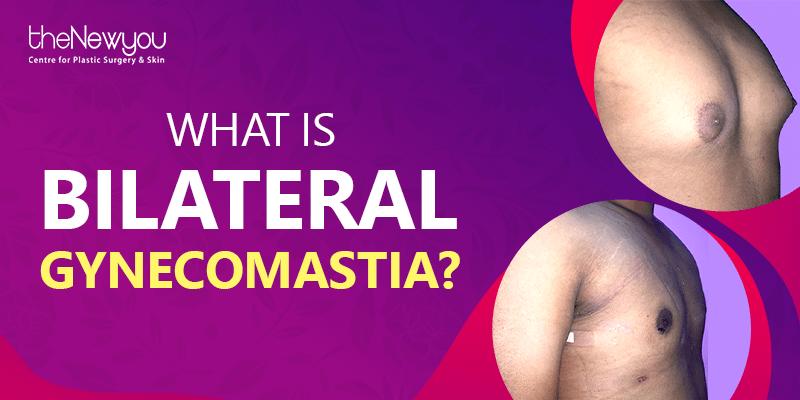Bilateral Gynecomastia is a common medical condition found in men and boys. It is a benign growth of the male breast. Usually, gynecomastia is bilateral but sometimes unilateral too. And, it results from a proliferation of the glandular component of the breast.
Surgery for Gynecomastia
Gynecomastia surgery can be done to reduce breast size in men, and flatten and enhance the chest contours. In some cases of surgical procedures, both excision and liposuction will be used. Liposuction procedure can eliminate excess fatty tissue.
In this process, a small tube is inserted through a 3 to 4 millimeter incision. Excision means cutting out and removing tissue with a scalpel. This is done to remove excess glandular tissue and will normally leave a scar around the edge of the nipple. If a major reduction in tissue and skin is needed, the incision and the scar will be larger.
After surgery is done, the chest will be bruised and swollen. And, the patient would be required to wear an elastic pressure garment for 2 weeks to help reduce the swelling. It might take about 6 weeks to return to a normal routine. Generally, complications from surgery are rare but excision may carry a risk of a blood clot.
In some medical cases, both excision and liposuction procedure will be used. After surgery, the chest will be bruised and might be swollen. The patient undergoing these procedures may have to wear an elastic pressure garment for few weeks to help reduce the swelling. It will take about 5 to 6 weeks to return to normalcy. Complications from surgery are rare. They include insufficient removal of breast tissue, uneven contour to the chest, and can result in causes of nipple pain in men.
Factors Which Can Lead to Bilateral Gynecomastia:-
It can stem from an imbalance between the sex hormones testosterone and estrogen. Estrogen is responsible for the enlargement of breast tissue. While testosterone stops estrogen from making breast tissue grow. Some of the crucial factors that can affect the hormones include excessive consumption of alcohol. Also, certain hereditary factors and medications, etc.
According to the medical experts, up to 1 in 9 newborn males have palpable breast tissue. Swollen breasts are more common among males as they get older. People in their older age produce less testosterone, and they usually have more fat than younger men. This can result in a higher production of estrogen.
Types of Bilateral Gynecomastia
Glandular gynecomastia
This type of gynecomastia develops due to high production of estrogen in the male body. People suffering with glandular gynecomastia tend to develop large breast tissue. And, older people are more likely to develop this kind of gynecomastia.
Fatty gynecomastia

Is Gynecomastia Genetic?
The cases of Gynecomastia due to genetic reasons are very rare. And, one of the most common genetic cause is a condition known as Klinefelter syndrome. This is known to affect about one in every 550 males.
What are The Stages of Bilateral Gynecomastia?
There are Various Stages of Gynecomastia Such As:-
Small enlargement without skin excess – This is the first stage of gynecomastia. The person suffering from it develops small breast enlargement which is not evident with clothing. Also, some tissue growth around the areola or the surrounding nipple area can be noticed. The nipple has a puffy look and the colour of the tissue growth is different from the natural breast tissue in that area. It is best to get treatment in this stage only.
Moderate enlargement without skin excess – People with this stage of gynecomastia have tissue growth that becomes broader than the first stage and expands throughout the chest. However, it still remains unnoticeable if loose clothes are worn. But, the chest feels tight and firm under the nipple area. While the outer area is soft and fatty. A patient can get the most desired results by undergoing gland excision along with liposuction surgery in this stage.
Moderate enlargement with minor skin excess – In this stage of gynecomastia there is excess skin around the areola causing it to become droopy. There is a lot of breast enlargement that even the width of the chest increases.
Moderate to severe enlargement – The male breasts become so large that they appear like female breasts. Also, even with loose-fitting clothes the sagging of the breasts is noticeable. This is the last stage of breast enlargement which is highly visible. The only treatment possible to cure this severe level of gynecomastia is liposuction with gland excision.
How to Diagnose Gynecomastia?
The diagnosis of gynecomastia disease starts with a physical examination. This is when the doctor can also ask about medicines and using drugs. Accordingly, the doctors would recommend blood tests to understand the functioning of the liver, kidney or thyroid.









